pin parvati
Published on April 02, 2025
Pin Parvati Trek Tour Package :Nestled deep within the pristine wilderness of Himachal Pradesh, Pin Parvati stands as a breathtaking testament to nature's grandeur and human endurance. This majestic mountain pass, perched at an elevation of 5,319 meters (17,420 feet), serves as a natural bridge connecting the Kullu Valley with the remote Pin Valley in Spiti. The pass derives its name from the sacred Parvati River that originates near its summit and the Pin River that flows through the valley below, creating a unique geographical feature that has captivated adventurers for generations.
The historical significance of Pin Parvati Pass extends far beyond its role as a mere geographical landmark. For centuries, it served as a vital trade route connecting the lush green valleys of Kullu with the arid, high-altitude desert of Spiti. Local shepherds and traders would traverse this challenging path, carrying goods and cultural exchanges between these distinct regions. Today, the pass continues to attract trekkers and mountaineers seeking to experience one of India's most demanding yet rewarding high-altitude adventures.
What sets Pin Parvati apart from other Himalayan passes is its remarkable diversity of landscapes. Within a single journey, trekkers encounter dense pine forests, alpine meadows bursting with wildflowers, glacial moraines, and stark, barren high-altitude terrain. This dramatic transition from verdant valleys to rugged mountain passes creates an unparalleled trekking experience that challenges even the most seasoned adventurers. The pass also holds spiritual significance, as it lies along ancient pilgrimage routes leading to various sacred sites throughout the region.
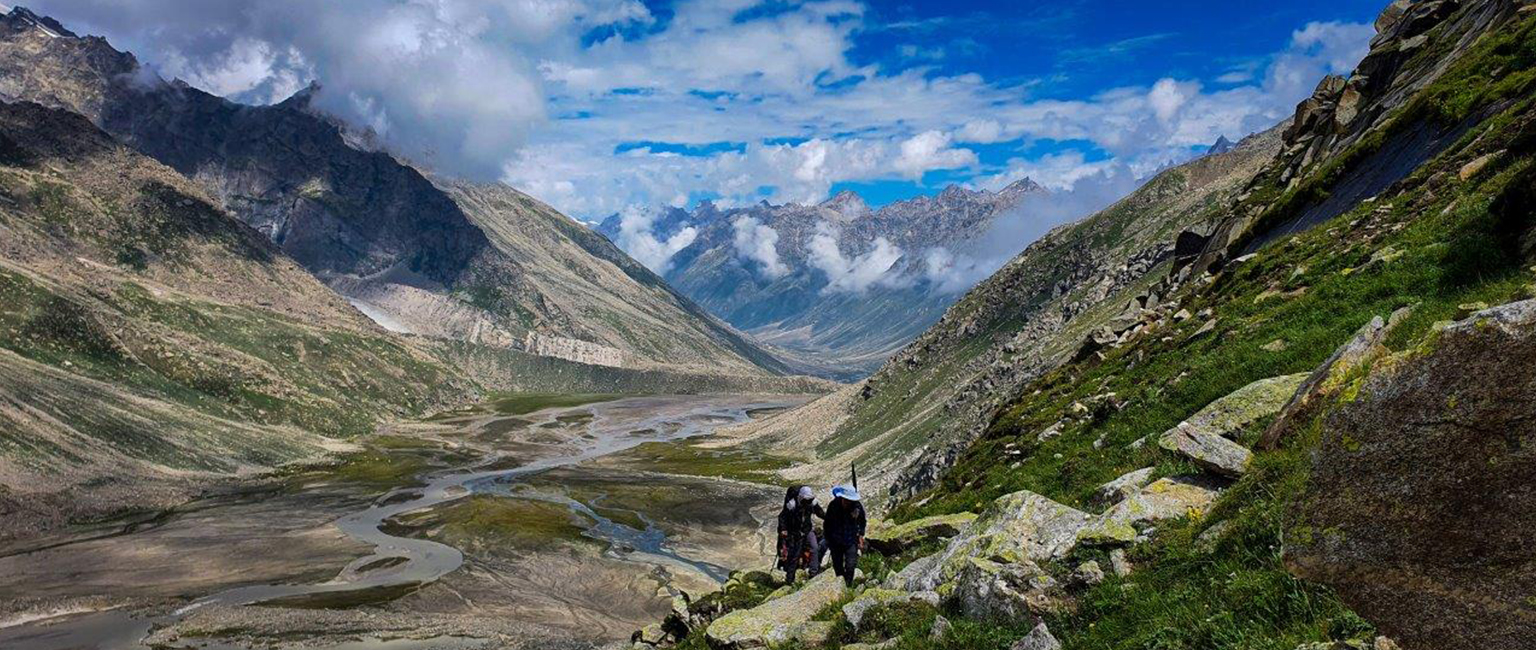
For those seeking to embark on the Pin Parvati Trek , the journey represents more than just a physical challenge; it offers a profound connection with nature and a chance to witness some of the most spectacular scenery in the Indian Himalayas. The combination of technical difficulty, cultural richness, and natural beauty makes Pin Parvati a bucket-list destination for serious trekkers and adventure enthusiasts worldwide.
Embarking on the Pin Parvati Trek: A Journey Through Diverse Landscapes
The Pin Parvati Trek unfolds as a multi-day odyssey through some of the most dramatic and varied terrains in the Indian Himalayas, offering adventurers an unparalleled experience across approximately 80 kilometers of trail. The journey typically begins from Kafni Glacier, located in the Kullu Valley, where trekkers are immediately enveloped by dense deodar and pine forests that gradually give way to lush alpine meadows. These initial stages of the trek provide relatively gentle ascents, allowing travelers to acclimate while marveling at the vibrant displays of rhododendrons and wildflowers that carpet the landscape during summer months.
As the trail progresses towards Odi Thatch, the terrain transitions into rolling alpine pastures interspersed with grazing grounds used by local shepherds. Here, trekkers encounter their first significant challenge at the Mantalai Lake campsite, situated at an elevation of approximately 4,100 meters. This location marks the beginning of the high-altitude section of the trek, where the air becomes noticeably thinner and temperatures drop significantly. The pristine waters of Mantalai reflect the surrounding snow-capped peaks, creating a surreal atmosphere that prepares trekkers mentally and physically for the challenges ahead.
The most demanding segment of the Pin Parvati Trek begins with the ascent to Pin Bhaba Pass itself. This section requires careful navigation through glacial moraines and rocky terrain, where experienced guides become invaluable. Trekkers must negotiate steep inclines and occasionally use fixed ropes to traverse particularly challenging sections. The final push to the pass demands not only physical endurance but also mental fortitude, as altitude sickness and unpredictable weather conditions can test even the most prepared adventurers.
Beyond the pass, the landscape transforms dramatically, revealing the stark beauty of the Spiti Valley. Here, trekkers descend through barren, moon-like terrain characterized by loose scree and rocky outcrops. The descent towards Mudh village tests different muscles and skills, requiring careful foot placement on slippery surfaces and maintaining balance on steep gradients. Throughout this section, the contrast between the verdant Kullu side and the arid Spiti side becomes strikingly apparent, offering a unique perspective on the region's diverse ecosystems.
Throughout the journey, trekkers are rewarded with breathtaking vistas that showcase the full spectrum of Himalayan landscapes. From dense forests and alpine meadows to glacial valleys and arid plateaus, each day presents new challenges and visual spectacles. The trek's difficulty level varies daily, with some sections requiring basic trekking skills while others demand technical proficiency in high-altitude navigation. This diversity ensures that every day brings fresh experiences and challenges, making the Pin Parvati Trek a truly comprehensive Himalayan adventure.
The Cultural Tapestry of Pin Parvati: Traditions and Heritage Along the Trail
The Pin Parvati Trek transcends mere physical exploration, offering a profound immersion into the rich cultural heritage that permeates both sides of the pass. As trekkers ascend from the Kullu Valley, they encounter the vibrant traditions of the indigenous communities who have called these mountains home for centuries. The Kullu region is renowned for its distinct Pahari culture, characterized by traditional stone-and-wood architecture, intricate embroidery work, and vibrant festivals like the famous Kullu Dussehra. Local villagers often welcome trekkers with warm hospitality, sharing stories of their ancestors who traversed these same paths for trade and pilgrimage.
Crossing over to the Spiti side reveals a marked cultural shift, reflecting the valley's historical connections with Tibet. The influence of Tibetan Buddhism becomes immediately apparent in villages like Mudh, where ancient monasteries and chortens dot the landscape. These religious structures serve as both spiritual centers and repositories of traditional knowledge, preserving centuries-old practices in herbal medicine, astrology, and Buddhist philosophy. Many trekkers find themselves invited to participate in morning prayers or enjoy traditional butter tea with local families, providing intimate glimpses into daily life in this remote region.
The cultural significance of Pin Parvati extends beyond visible landmarks to encompass intangible heritage elements crucial to understanding the region's identity. Ancient trade routes that once crisscrossed the pass facilitated not only commerce but also the exchange of ideas, art forms, and religious practices between the predominantly Hindu Kullu Valley and Buddhist Spiti. This cultural confluence is evident in the region's cuisine, where dishes incorporate ingredients and techniques from both sides of the pass. Traditional foods like thukpa, momos, and madra reflect this fascinating blend of culinary traditions, offering trekkers delicious opportunities to connect with local culture.
Perhaps most compelling are the spiritual dimensions of the trek, which resonate deeply with many visitors. Numerous sacred sites along the route, including ancient temples and meditation caves, bear testament to the region's long history of spiritual seekers and ascetics. Local legends speak of sages who meditated in these high-altitude sanctuaries, drawing strength from the mountains' austere beauty. Many trekkers report feeling a profound sense of peace and connection as they traverse these spiritually charged landscapes, finding that the physical challenge of the journey enhances rather than detracts from its spiritual significance.
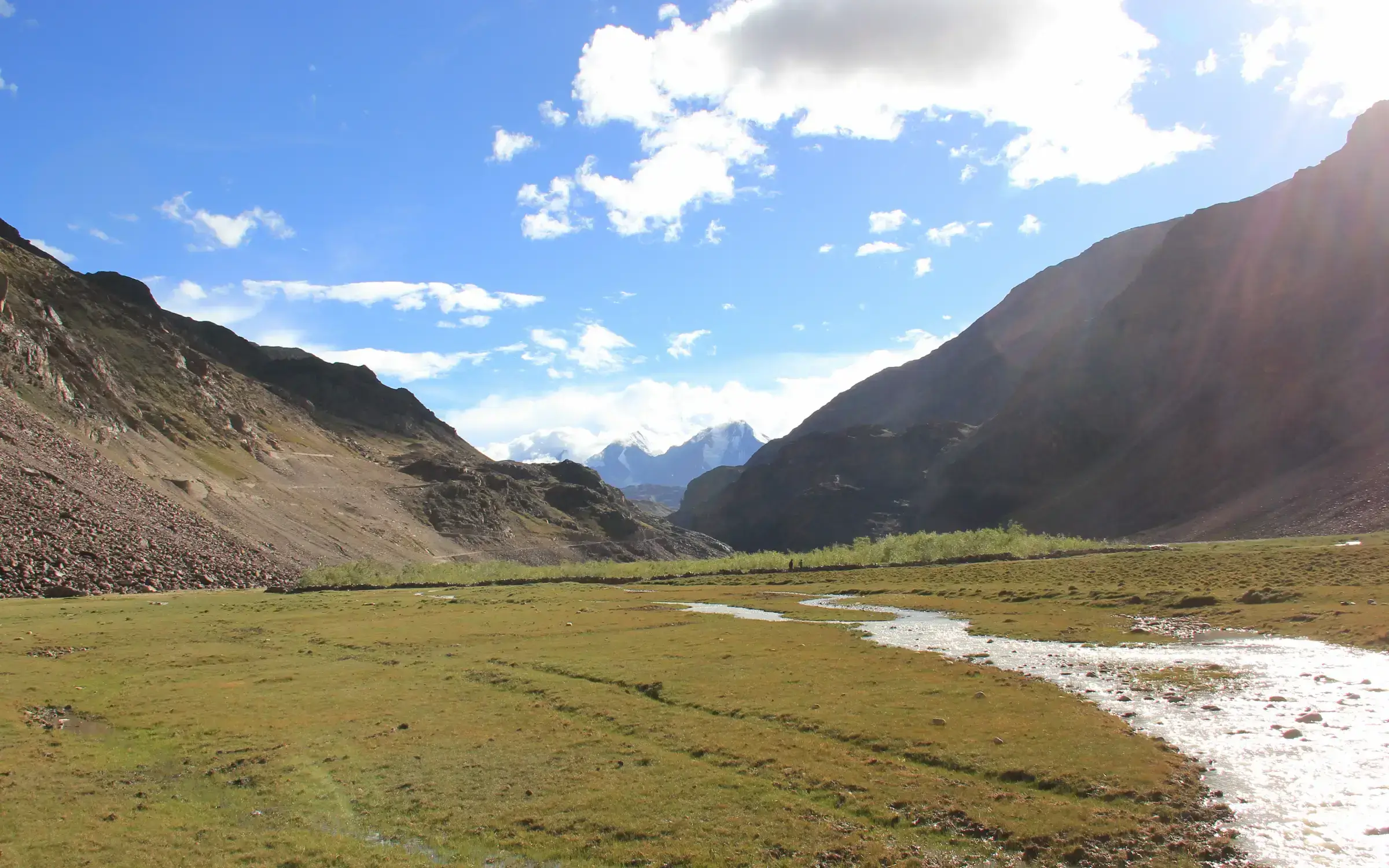
The cultural experiences available along the Pin Parvati Trek extend beyond passive observation to active participation. Homestay programs in several villages allow trekkers to immerse themselves in traditional lifestyles, learning crafts like wool spinning or participating in agricultural activities. These interactions foster mutual understanding and appreciation between visitors and local communities, ensuring that tourism benefits residents while preserving their cultural heritage. Such authentic encounters transform what might otherwise be a purely physical challenge into a holistic journey of personal growth and cultural discovery.
Navigating Challenges and Rewards: The Pin Parvati Trek Experience
Undertaking the Pin Parvati Trek demands meticulous planning and preparation, as the journey presents a formidable set of challenges that test even the most experienced trekkers. The primary obstacle lies in the extreme altitude variations encountered throughout the trek, with elevations ranging from approximately 2,700 meters at the starting point to the daunting 5,319 meters at the pass itself. Altitude sickness poses a significant risk, particularly during the rapid ascent to higher camps, necessitating proper acclimatization days built into any responsible itinerary. Experienced guides recommend spending at least two nights at intermediate altitudes before attempting the final push to the pass, allowing the body sufficient time to adjust to reduced oxygen levels.
Weather conditions represent another critical factor that can make or break a successful crossing. The Pin Parvati region experiences highly unpredictable weather patterns, with temperatures potentially dropping to -15°C at night, even during summer months. Sudden snowstorms can occur at any time of year, transforming dry trails into treacherous icy paths within hours. Therefore, packing appropriate gear becomes paramount – this includes multiple thermal layers, waterproof jackets and pants, sturdy trekking boots, and specialized equipment such as crampons and ice axes for the glacier crossings. Additionally, trekkers must carry high-calorie food supplies and hydration systems designed for sub-zero conditions.
Despite these challenges, the rewards awaiting those who successfully complete the Pin Parvati Trek are nothing short of extraordinary. The panoramic views from the pass itself offer a rare vantage point where trekkers can simultaneously gaze upon the verdant Kullu Valley on one side and the stark, lunar-like landscape of Spiti on the other. This stark contrast exemplifies the region's geological diversity and provides a profound sense of accomplishment for those who've navigated the challenging terrain separating these two worlds. The experience of standing atop one of the highest trekking passes in the Indian Himalayas instills a deep appreciation for the raw power and beauty of nature.

The trek also rewards adventurers with numerous smaller triumphs along the way. Each day brings new discoveries, from spotting rare Himalayan wildlife such as blue sheep and Himalayan monals to encountering hidden waterfalls and pristine alpine lakes. The journey through diverse ecosystems offers valuable lessons in environmental adaptation and resilience, while the physical demands of the trek foster personal growth and self-discovery. Many trekkers report that overcoming the challenges of Pin Parvati leaves them with enhanced confidence and a renewed perspective on their capabilities.
To maximize safety and success, potential trekkers should consider joining organized expeditions led by experienced operators familiar with the region's unique challenges. These groups typically include professional guides trained in high-altitude rescue techniques, porters to assist with heavy loads, and support staff familiar with emergency protocols. Additionally, trekkers should undergo thorough medical check-ups before departure and ensure they're adequately insured for high-altitude adventures. Proper training in advance, including cardiovascular conditioning and practice hikes with loaded backpacks, significantly improves chances of completing the trek successfully.
Optimal Timing and Weather Considerations for the Pin Parvati Trek
Successfully navigating the Pin Parvati Trek hinges significantly on choosing the right season and understanding the region's complex weather patterns. The optimal window for undertaking this challenging expedition falls between June and September, when the snow has sufficiently melted to make high-altitude passes accessible while daytime temperatures remain relatively mild. During these summer months, trekkers can expect daytime highs ranging from 15°C to 20°C in lower altitudes, though temperatures can plummet to -5°C to -15°C at night, especially near the pass.
The monsoon season, typically spanning July and August, brings its own set of challenges and opportunities. While rainfall in the Kullu Valley can make trails slippery and increase the risk of landslides, the Spiti side remains largely unaffected due to its rain shadow position. This weather pattern actually enhances the trek's appeal, as the contrast between the lush, rain-nourished Kullu side and the arid Spiti landscape becomes even more pronounced. However, trekkers must be prepared for sudden weather changes, as clouds can gather quickly around the pass, reducing visibility and increasing the risk of hypothermia.
Winter attempts on Pin Parvati are generally discouraged for all but the most experienced mountaineers, as heavy snowfall renders the pass virtually impassable without specialized equipment and expertise in winter climbing. Even during the recommended summer months, snow bridges and crevasses remain present in certain sections, particularly near the Kafni Glacier and the final approach to the pass. Early morning starts become crucial during this period, as afternoon cloud cover and potential snow showers can make navigation hazardous.
Temperature fluctuations throughout the trek require careful consideration when planning gear and clothing. The rapid ascent from subtropical forests to high-altitude deserts means trekkers must prepare for extreme variations within a single day. Layering systems become essential, with moisture-wicking base layers, insulating mid-layers, and waterproof outer shells forming the core of any responsible packing list. Special attention should be paid to protecting extremities, as frostbite risks increase significantly above 4,500 meters.
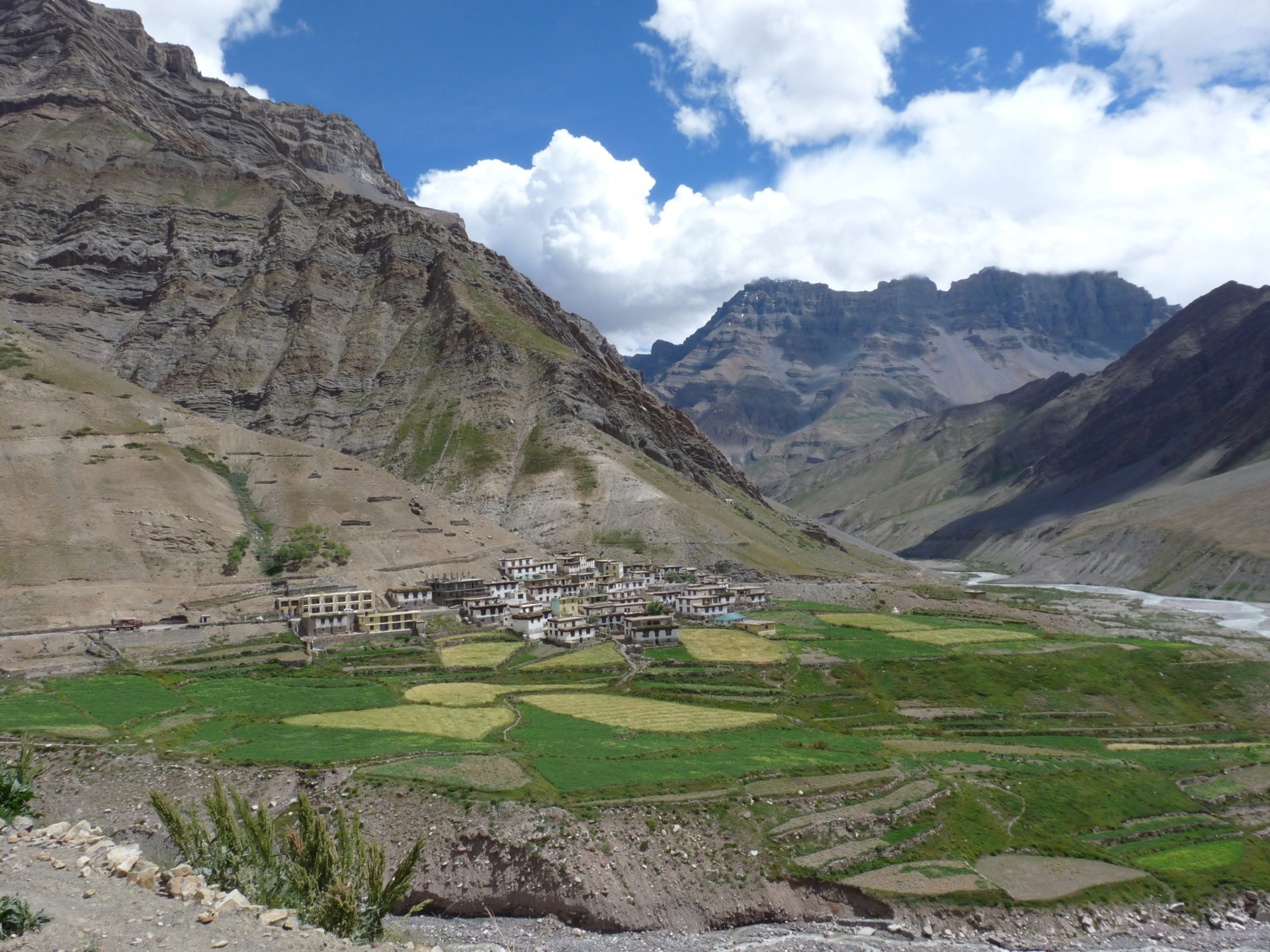
Wind patterns also play a crucial role in determining daily trekking schedules. Afternoons often bring stronger winds across the pass, making early morning crossings safer and more comfortable. Experienced guides recommend reaching the pass by late morning to avoid these stronger winds and potential afternoon storms. Understanding these seasonal nuances and micro-climatic variations helps trekkers prepare more effectively and increases their chances of a safe and successful crossing.
Essential Preparations for the Pin Parvati Trek: Gear, Permits, and Logistics
Embarking on the Pin Parvati Trek demands meticulous preparation across multiple fronts, with particular attention to gear selection, permit acquisition, and logistical arrangements. The extreme altitude and challenging terrain necessitate specialized equipment that goes beyond standard trekking gear. At the core of every trekker's packing list should be a four-season sleeping bag rated for -20°C, as temperatures at higher camps can drop precipitously after sunset. Pair this with an inflatable sleeping pad that provides both insulation and comfort on uneven ground. Layered clothing is crucial, including merino wool base layers, fleece mid-layers, down jackets, and waterproof outer shells. Specialized footwear, such as high-altitude mountaineering boots compatible with crampons, becomes essential for negotiating snow-covered sections and glacier crossings.
Permit requirements add another layer of complexity to trip planning. Trekkers must secure Inner Line Permits (ILP) for entering Spiti Valley, which can be obtained online or through district magistrate offices in Shimla, Reckong Peo, or Kaza. Additional permits may be necessary for camping in restricted areas near the pass, particularly if extending the itinerary to include exploration of nearby glaciers or high-altitude lakes. It's advisable to start the permit application process at least a month in advance, keeping digital and physical copies of all documentation throughout the journey.
Logistical considerations begin with transportation arrangements to the trailhead. Most trekkers opt for shared taxis from Manali to reach the Kullu Valley starting points, though private vehicles offer greater flexibility for adjusting schedules based on weather conditions. On the Spiti side, arranging transportation from Mudh back to either Kaza or Manali requires advance booking, as vehicle availability can be limited in these remote areas. Food provisions must account for high-calorie needs at altitude, with emphasis on lightweight, non-perishable items that can withstand temperature fluctuations. Dehydrated meals, energy bars, and instant soups form the backbone of most rations, supplemented by locally sourced provisions at villages along the route.
Medical preparations are equally critical, given the pass's extreme altitude and remote location. A comprehensive first aid kit should include medications for altitude sickness (Diamox), pain relief, antibiotics, and blister treatment, alongside personal prescription medications. Travel insurance covering high-altitude trekking and emergency evacuation is mandatory, with policies specifically noting coverage up to 5,500 meters. Battery management for electronic devices presents another challenge, as cold temperatures rapidly drain power. Carrying solar chargers and spare batteries becomes essential for maintaining communication devices and cameras.

Practical advice from seasoned trekkers emphasizes the importance of incremental weight distribution. Large backpacks (60-70 liters) should be organized with frequently needed items easily accessible, while essential emergency gear stays consistently within reach. Hydration systems must account for freezing temperatures, with insulated tubes and bottles carried close to the body. Navigation tools, including detailed topographic maps, GPS devices, and compasses, should be supplemented with offline digital maps stored on smartphones. Regular communication with local guides about weather updates and trail conditions proves invaluable, as these professionals maintain current information about potential hazards or route changes.
Capturing the Essence of Pin Parvati: Photography and Wildlife Encounters
The Pin Parvati Trek presents unparalleled opportunities for photography enthusiasts and wildlife lovers, offering a diverse canvas of natural wonders and rare animal sightings across its varied ecosystems. As trekkers ascend from the Kullu Valley, they enter a photographer's paradise filled with dense pine forests bathed in golden morning light, their needles glistening with dew. The transition through alpine meadows during summer months transforms into a kaleidoscope of colors, with wildflowers like Himalayan blue poppies, primulas, and potentillas creating vibrant foregrounds against majestic mountain backdrops. The early morning mist rising from the valleys provides ethereal conditions for capturing dreamlike landscapes, while the soft evening light paints the snow-capped peaks in hues of pink and gold.
Wildlife photography along the Pin Parvati route demands patience and keen observation skills, as the region hosts several rare and elusive species. The endangered Himalayan monal, with its iridescent plumage, often appears in the lower reaches of the trek, particularly near Odi Thatch. Patient photographers can capture these magnificent birds displaying their colorful feathers during mating season. Higher up, near the tree line, herds of Himalayan blue sheep (bharal) navigate the rocky terrain, providing excellent opportunities for capturing their sure-footed movements against dramatic cliff faces. The region also shelters the elusive snow leopard, though sightings remain rare and require exceptional luck and timing.
The Pin Parvati area supports a rich tapestry of biodiversity, including several species adapted to specific altitudinal zones. In the forested sections, trekkers might encounter Himalayan black bears foraging among the trees, while red foxes and weasels dart through the undergrowth. Above the tree line, marmots create their colonies in rocky outcrops, their whistles serving as natural warning systems for approaching predators. Birdwatchers will delight in spotting golden eagles soaring above the ridges and lammergeiers circling the cliffs, while smaller species like snow pigeons and accentors flit among the rocks. The region's flora contributes equally to its photographic appeal, with ancient juniper bushes twisted by centuries of harsh winds and delicate alpine plants thriving in seemingly impossible conditions.
To maximize photographic opportunities, trekkers should carry versatile camera equipment capable of handling diverse lighting conditions and subject distances. Wide-angle lenses excel in capturing sweeping landscapes, while telephoto lenses prove invaluable for wildlife photography. Tripods become essential for low-light conditions and long-exposure shots of star-filled skies above the pass. The clear air at high altitudes allows for exceptional clarity in astrophotography, with minimal light pollution revealing the Milky Way in stunning detail. Photographers should also consider carrying polarizing filters to enhance sky contrast and graduated neutral density filters for balancing exposure in high-contrast scenes.
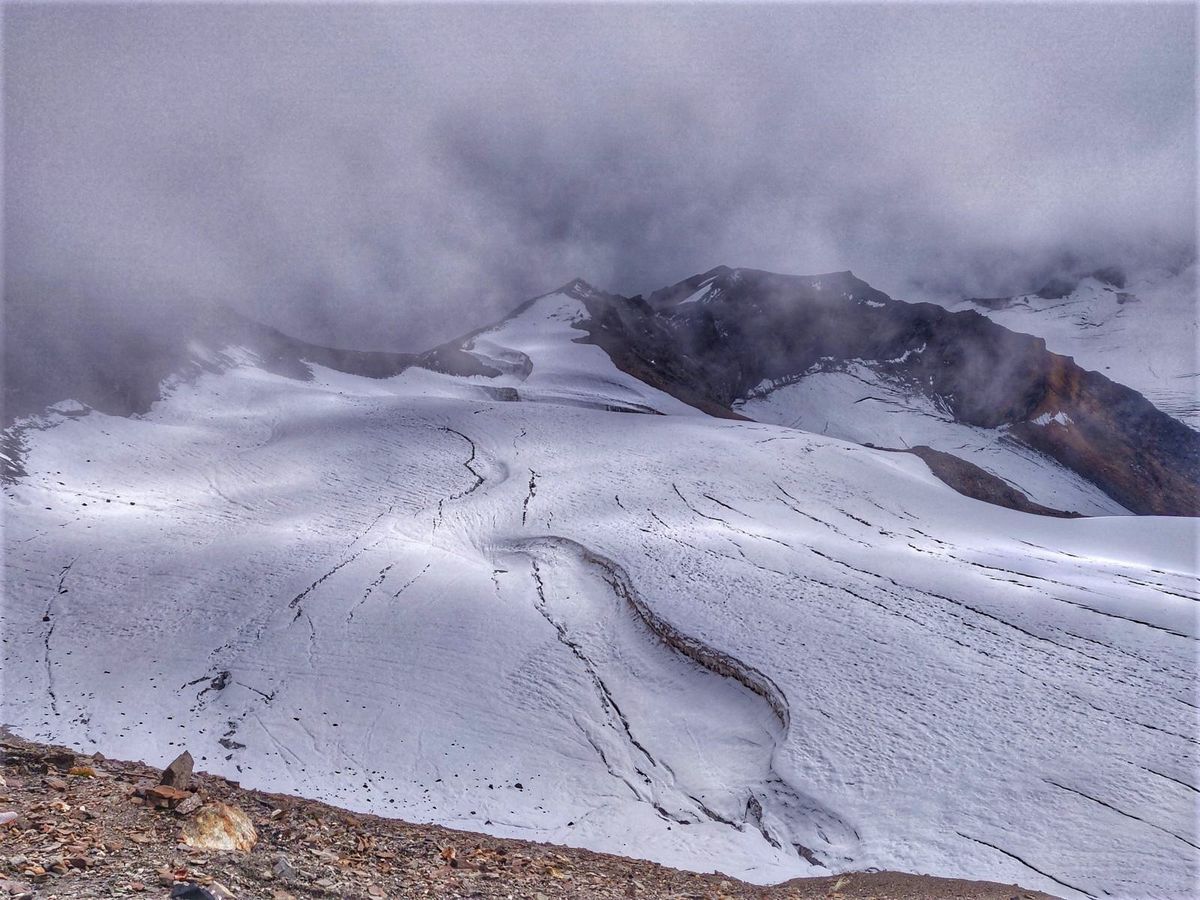
The changing ecosystems along the trek offer distinct photographic themes and challenges. The lush Kullu side provides opportunities for macro photography of wildflowers and fungi, while the arid Spiti side demands compositional creativity to capture the stark beauty of its lunar-like landscape. The transition zone near the pass itself creates dramatic juxtapositions of green and brown, life and desolation, that tell compelling visual stories of nature's adaptability. Wildlife encounters often occur unexpectedly, requiring quick reflexes and pre-set camera settings to capture fleeting moments. Many veteran trekkers recommend dedicating specific days solely to photography, allowing time to wait for perfect lighting conditions and animal behaviors without the pressure of maintaining a strict trekking schedule.
Sustainability and Conservation: Preserving the Pristine Beauty of Pin Parvati
The growing popularity of the Pin Parvati Trek has brought both opportunities and challenges to this ecologically sensitive region, necessitating a collective commitment to sustainable tourism practices. Recent environmental assessments reveal alarming trends, including soil erosion along heavily trafficked sections, increased waste accumulation at high-altitude campsites, and disturbance to fragile alpine ecosystems. To address these pressing concerns, local authorities and responsible tour operators have implemented stringent conservation measures that prioritize minimal impact tourism while preserving the region's natural integrity.
One of the most significant initiatives involves the establishment of designated camping zones equipped with eco-friendly waste management systems. Modern Pin Parvati Trek packages now mandate the "pack in, pack out" principle, with operators providing biodegradable waste bags and portable toilets to minimize environmental footprint. Advanced filtration systems installed at key water sources help reduce plastic bottle usage, while solar-powered lighting at base camps eliminates the need for disposable batteries. Local conservation bodies conduct regular clean-up drives along the trail, removing accumulated debris and educating trekkers about proper waste disposal practices through interactive workshops.
Community engagement plays a pivotal role in sustainable development efforts surrounding Pin Parvati. Several initiatives have successfully integrated local communities into the tourism ecosystem, creating economic opportunities while preserving traditional knowledge. Homestay programs operated by indigenous families offer authentic cultural experiences while generating supplementary income, reducing reliance on resource-intensive infrastructure development. Training programs equip local youth with skills in eco-tourism management, guiding, and hospitality services, ensuring that tourism benefits remain within the community while fostering environmental stewardship.
Conservation efforts extend to protecting the region's rich biodiversity through scientific research and habitat restoration projects. Controlled trekking zones help minimize human-wildlife conflict, particularly concerning endangered species like the snow leopard and Himalayan monal. Seasonal restrictions on certain trails during breeding seasons demonstrate how responsible tourism practices can coexist with conservation goals. Reforestation projects along degraded sections of the trail have helped stabilize slopes and restore native vegetation cover, while artificial water holes created near wildlife corridors support local fauna during dry seasons.
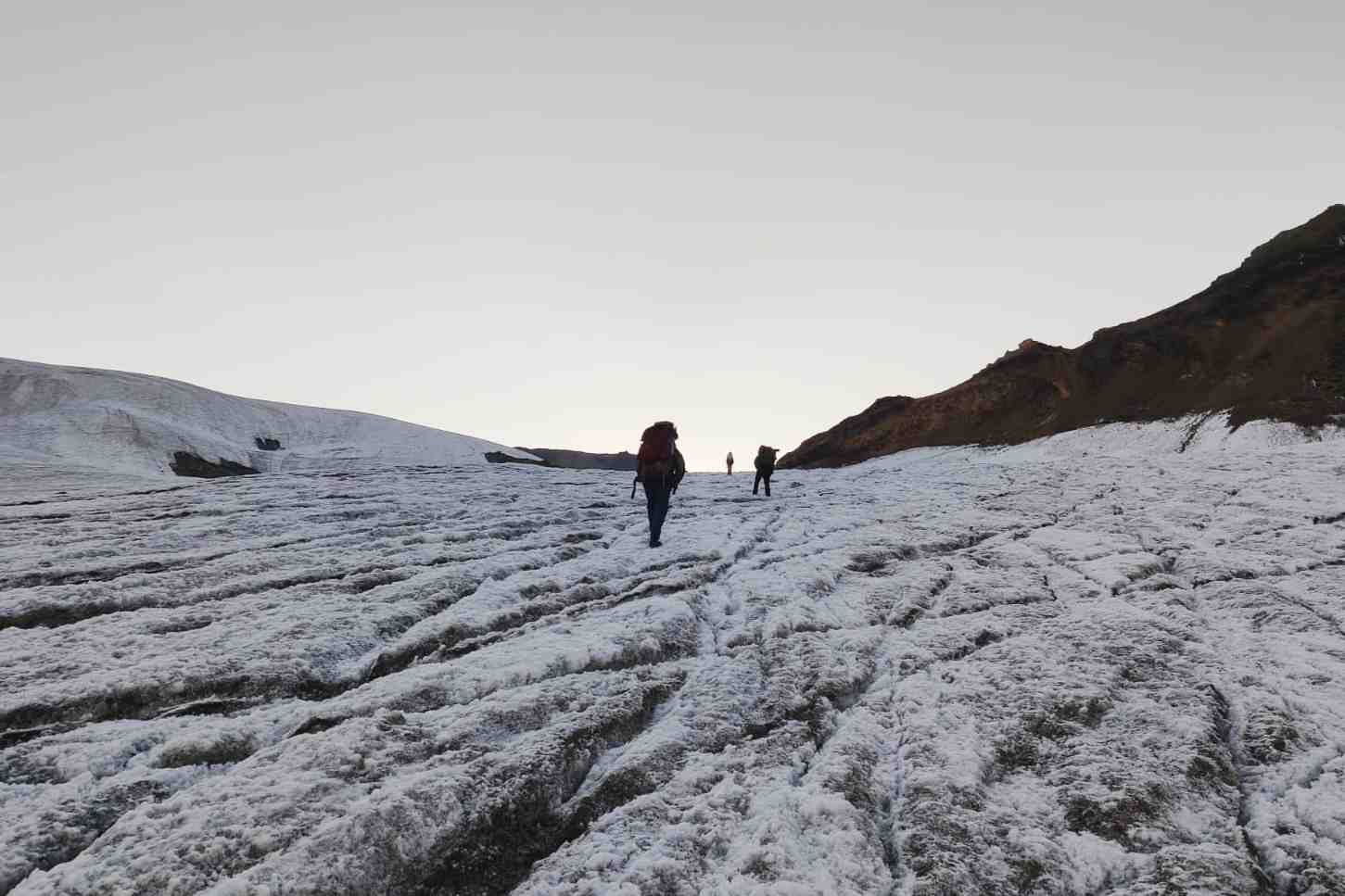
Technological innovations complement traditional conservation methods, enhancing both visitor experience and environmental monitoring. Mobile applications developed specifically for the Pin Parvati region provide real-time information about trail conditions, weather updates, and environmental alerts, enabling better decision-making by trekkers and tour operators. Digital mapping systems help monitor visitor distribution patterns, allowing authorities to implement crowd management strategies during peak periods. Remote sensing technology tracks glacial movements and vegetation changes, providing valuable data for climate change research and adaptive management strategies.
Financial mechanisms support these conservation efforts through various channels. Eco-taxes incorporated into Pin Parvati Trek packages fund maintenance of trails and facilities, while voluntary contributions from visitors support specific projects like installing bio-toilets at high-altitude locations and developing renewable energy solutions for remote camps. Corporate social responsibility initiatives from tourism companies operating in the region channel resources toward community development projects and environmental restoration programs. The success of these measures relies heavily on collaboration between multiple stakeholders – government agencies, tour operators, local communities, and visitors themselves – working together to preserve this pristine Himalayan corridor for future generations.
People Also Ask
What is the best time to attempt the Pin Parvati Trek?
The ideal time to undertake the Pin Parvati Trek is from June to September. During these months, the snow has melted sufficiently, making high-altitude passes accessible, and the weather remains relatively stable with clear skies and moderate daytime temperatures.
How difficult is the Pin Parvati Trek?
The Pin Parvati Trek is considered one of the most challenging treks in India due to its high altitude, technical sections, and unpredictable weather. It requires good physical fitness, prior trekking experience, and mental resilience to navigate steep ascents, glacier crossings, and extreme temperature variations.
Do I need a guide for the Pin Parvati Trek?
Yes, hiring an experienced guide is highly recommended for the Pin Parvati Trek . The route involves technical sections, high-altitude navigation, and potential weather hazards. Guides also provide valuable insights into local culture and ensure safety throughout the journey.
What permits are required for the Pin Parvati Trek?
Trekkers need to obtain Inner Line Permits (ILP) for entering Spiti Valley, which can be acquired online or through district magistrate offices in Shimla, Reckong Peo, or Kaza. Additional permits may be required for camping in restricted areas near the pass.
How do I prepare physically for the Pin Parvati Trek?
Physical preparation for the Pin Parvati Trek includes cardiovascular exercises like running, cycling, or swimming, strength training for legs and core, and practice hikes with a loaded backpack. Acclimatization to high altitudes is also crucial, so gradual exposure to elevation is advised.
What gear is essential for the Pin Parvati Trek?
Essential gear for the Pin Parvati Trek includes a four-season sleeping bag rated for -20°C, waterproof clothing, thermal layers, sturdy mountaineering boots, crampons, ice axes, gloves, sunglasses, sunscreen, and a hydration system. A first aid kit and navigation tools are also important.
Is altitude sickness a concern during the Pin Parvati Trek?
Yes, altitude sickness is a significant concern on the Pin Parvati Trek , especially when crossing the pass at 5,319 meters. Trekkers should acclimatize properly, stay hydrated, and carry medications like Diamox. Descending immediately if symptoms worsen is critical.
Can beginners attempt the Pin Parvati Trek?
While beginners with excellent physical fitness can attempt the Pin Parvati Trek , it is better suited for experienced trekkers due to its technical difficulty and high-altitude challenges. Prior experience in multi-day treks and glacier crossings is advisable.
How long does the Pin Parvati Trek take?
The Pin Parvati Trek typically takes 8-10 days to complete, depending on the itinerary and acclimatization schedule. This includes travel time to the trailhead and back, as well as rest days for acclimatization.
What wildlife can be spotted during the Pin Parvati Trek?
During the Pin Parvati Trek , you may encounter Himalayan monals, blue sheep (bharal), red foxes, marmots, and birds like golden eagles and snow pigeons. Rare sightings include snow leopards, though they are elusive and require luck to spot.
Are there medical facilities available along the Pin Parvati Trek?
Medical facilities are extremely limited along the Pin Parvati Trek . Basic first aid must be carried by trekkers, and travel insurance covering high-altitude emergencies is mandatory. The nearest advanced medical care is available in towns like Manali or Kaza.
What kind of food is available during the trek?
Food during the Pin Parvati Trek typically includes high-calorie meals like instant noodles, soups, energy bars, and dehydrated meals. Locally sourced provisions such as rice, dal, and vegetables are available in villages along the route.
How cold does it get during the Pin Parvati Trek?
Temperatures during the Pin Parvati Trek can drop to -15°C at night, especially near the pass. Daytime temperatures range from 15°C to 20°C in lower altitudes but can fall below freezing at higher camps.
Is it safe to trek alone on the Pin Parvati route?
Trekking alone on the Pin Parvati Trek is not recommended due to its remote location, technical challenges, and unpredictable weather. Joining a guided group or hiring a local guide ensures safety and support throughout the journey.
What makes the Pin Parvati Trek unique compared to other treks?
The Pin Parvati Trek stands out for its dramatic contrast between the lush Kullu Valley and the arid Spiti landscape, its high-altitude pass, and its cultural significance. It combines technical trekking, diverse ecosystems, and rich heritage, offering a comprehensive Himalayan adventure.

